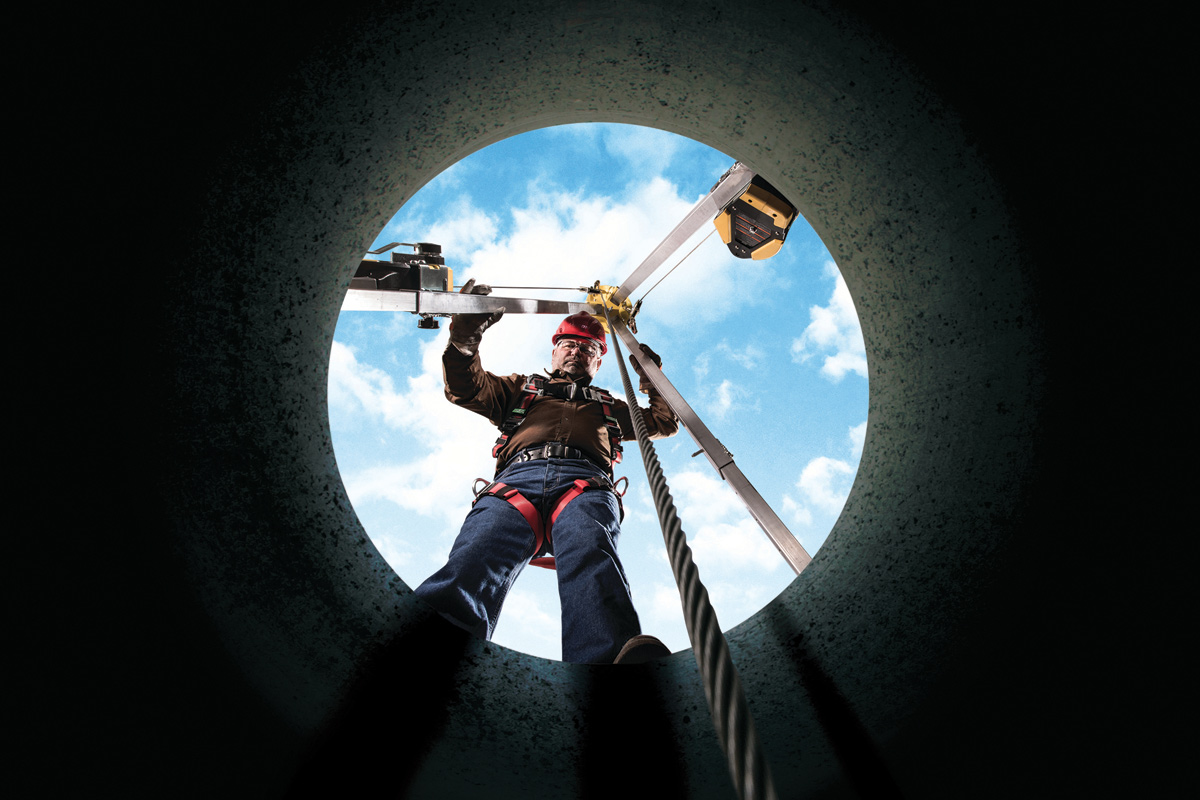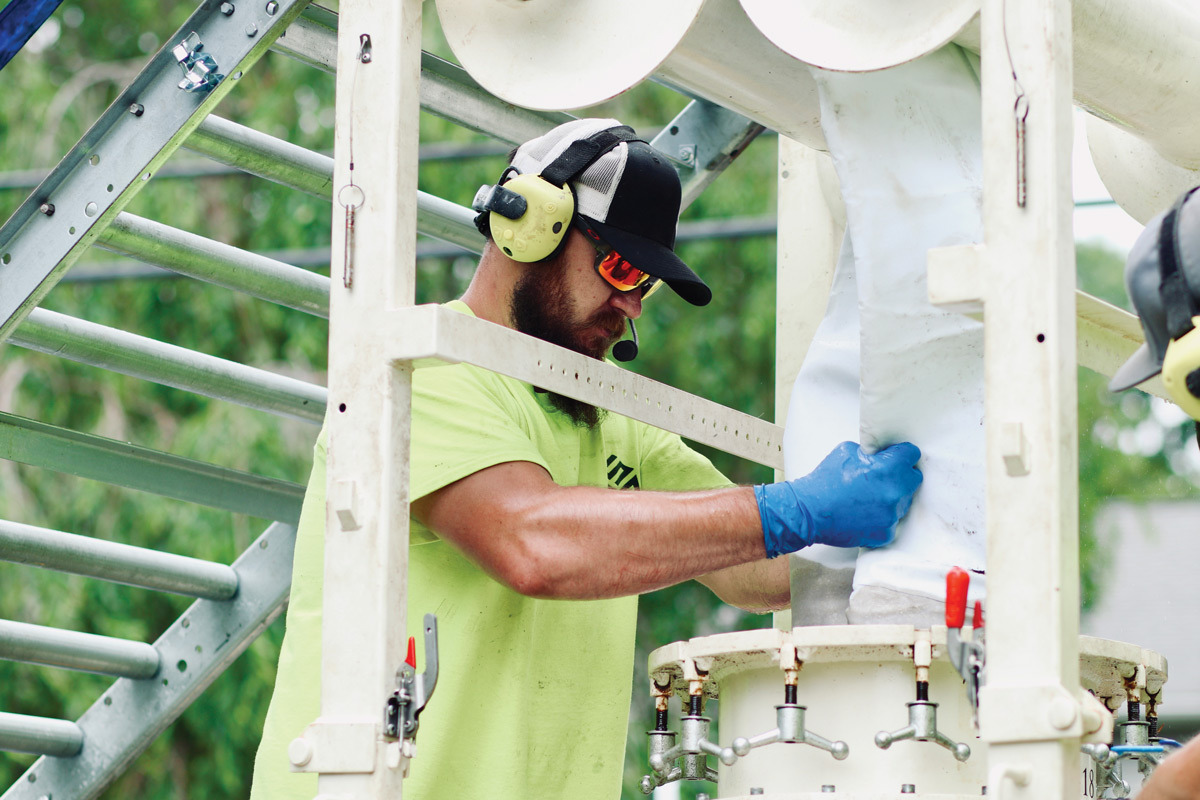
Keyhole Technology Provides Low-Dig Alternative to Utility Locating
February 13, 2015
Keeping Trenchless – Trenchless
In North America, traffic disruption due to utility maintenance or roadwork is no longer just a nuisance or inconvenience to be endured, but has reached a stage where it affects not only the lives of millions of people but the functioning of the entire national economy. It also raises a variety of environmental issues.
In the Gas Industry
When Robert B. Somerville, one of Ontario’s largest pipeline and utility contractors and an early adopter of the keyhole coring and reinstatement process in 2003, decided to employ horizontal directional drilling (HDD) and keyhole technology to expedite gas utility maintenance and construction work on Toronto streets, the combination not only generated substantial economic savings for their clients but benefited the entire community, as well.
Several years ago, Somerville completed a large gas rehabilitation job for Enbridge Gas Distribution on a busy, mixed residential and commercial arterial roadway in Toronto, with average daily traffic levels of more than 20,000 motor vehicles per day. The rehabilitation project involved the installation of new PE services across this busy street for houses and businesses on the east side of the street from a newly installed 4-in. PE gas main, running down the west side for six city blocks, or approximately a half a mile.
In addition to reducing its overall cost, Enbridge’s aim was to reduce the duration of the project and its impact on surrounding homeowners and businesses and to minimize traffic disruption on this heavily trafficked north-south thoroughfare. To achieve these objectives, Somerville opted against open-cut trenching in favor of HDD to install the new services. The safe execution of the 40 to 50 HDD drill shots needed to cross this busy street was monitored through keyholes cored through the pavement.
Daylighting, or potholing, to confirm the exact location of conflicting utilities before drilling is a required practice in Ontario. In this case, each crossing required the exposure of five utilities: a 48-in. trunk water main, an 8-in. water main and a 6-in. gas main under the roadway and a concrete telephone duct and a high voltage hydroelectric conduit under the sidewalk.
In total, some 200 cores were cut and reinstated in the roadway (4-in. asphalt concrete over 8-in. to 12-in. PCC base) and sidewalk (7-in. concrete). While the rectangular launch pits on the west side were temporarily reinstated using conventional means (engineered fill with cold patch), all of the cores were permanently reinstated with Utilibond. This process allowed the roadway and sidewalks to be reopened to traffic within 30 minutes and dramatically reduced the number of charge backs by the City of Toronto for the cost of permanent pavement restoration.
By using easily installed circular road plates that fit snugly in the cored hole, traffic was allowed to flow in two of the four lanes at all times, thereby reducing the impact of the work on the neighborhood and the travelling public. The road plates also allowed crews to work at an optimum rate without having to wait for others to complete their task and this helped to schedule the work more efficiently.
When it was time for the drill shot across the street, the road plate over each of the buried conflicts was lifted allowing the crew to observe the safe passage of the drill, then replaced to keep traffic moving. Later, the holes were backfilled and the cores reinstated by crews with production line efficiency.
In the Water Industry
Public convenience and saving money are also important factors in advancing the use of trenchless technology in the water industry.
Total replacement of the approximately 3.2 million km (2 million miles) of water pipe inventory in the United States — not forgetting the additional 965,606 km (600,000 miles) of wastewater pipe and the 112,000 km (69,594 miles) of Canadian water mains — would be expensive, disruptive and protracted. Given the problem’s enormity and complexity, utilities are scrambling to develop alternative water and wastewater pipeline rehabilitation strategies. The remedy currently gaining the most traction with utilities and their customers is trenchless technology.
This is due partly because it is quicker and less socially disruptive than open-trench construction, but mostly because it can take full advantage of recent advances in the development of long-lasting HDPE pipe that neither tuberculates nor supports bacterial growth and is non-conducting, which means it is not subject to corrosion and maintains its flow capability over time with a service life of between 50 and 100 years. Its combination of flexibility and leak-free joints also allows cost-effective installation methods such as HDD and pipe bursting,
Although there are other methods of rehabilitation like relining existing mains, because HDD and pipe bursting result in a full structural renewal, usually with new corrosion-free HDPE piping, these two methods seem to be the ones gaining most attention.
But just as traffic congestion on the surface makes it difficult to find enough space in many public thoroughfares to perform any kind of construction, underground congestion means that finding space within many public rights of way for new pipelines can be equally difficult.
If there is room, HDD, supported by coring and reinstatement, can make installations beneath busy streets and sidewalks in congested downtown areas with minimal surface damage or interruption of vehicular and pedestrian traffic. Compact directional systems can be used to install service lines to residences without damaging expensive landscaping. And now that new damage prevention protocols have been developed to deal with potential cross-bores, directional drilling can be employed to reduce restoration time and costs in both urban areas and residential neighbourhoods.
Follow the Money
It is well known that trenchless technology has the potential to save millions of dollars when used for gas or water-pipe renewal but it doesn’t make a lot of sense to try to save money, time and effort by rehabilitating water or gas mains by using trenchless technologies if you still have to dig a 2-by-4-ft pit in the street in front of every house to reconnect the services. After excavations are made for launching and receiving pits to remove obstructions such as valves, bends and other fittings, and to reconnect service laterals and fire hydrants, many of the trenchless methods will look in practice like traditional open-trench replacement that the utility was trying to avoid in the first place. Once you’ve done that, the street will be pretty much chopped up and will likely need to be repaved.
According to a 2007 study by the Water Research Foundation (WRF), because they are the most numerous, it is the cost of restoring hundreds of excavations needed to reconnect service laterals that robs those trenchless processes of most of their economies. On a typical residential street conventional pavement restoration costs can add $40 to $50 per feet of main to the overall cost of the rehabilitation project. That’s $250,000 per mile of new main.
This is where keyhole technology comes in. Employing keyhole coring and reinstatement methods to find and reconnect the service lateral avoids most of this restoration cost and the scarring of the streetscape.
This is not rocket science. Every day heart surgery is routinely performed using miniature tools at the ends of long catheters. Yet service laterals today are still connected to mains in basically the same way as a century ago. The technical challenges in reconnecting services are not as difficult as heart surgery. In fact, as the WRF study concludes, most if not all of the technical issues have already been solved in the natural gas industry.
Like microsurgery in the medical field, the environmentally friendly keyhole coring and reinstatement process can enable utility crews to cost-effectively reconnect services from the road surface through 18-in. or 24-in. diameter keyholes cored through the pavement. After the services have been connected, the core of pavement that was earlier removed to facilitate the connection can be bonded back into the road as a permanent, almost invisible, perfectly matching, waterproof pavement repair that can help to extend the performance life of asphalt and concrete pavements, significantly reduce traffic delays, and minimize inconvenience to the public.
Connecting Laterals
The first step in pipe bursting is to install a by-pass water supply for customers while the work is being completed. The next step is to use standard locating techniques to find, expose and disconnect the laterals from the existing main so they aren’t damaged during pipe bursting. This is done through a keyhole.
Once the existing pipe has been burst and the new main pulled into place, the lateral can then be connected to the main through the keyhole using the same kind of long handled tools, developed in the gas industry, and used to install valves and connect gas services.
The field tests in the WRF study demonstrated that a water utility crew already has all of the knowledge, tools and equipment needed to successfully execute a water main pipe bursting project. And recent developments in the gas industry have improved the trenchless nature of the process by being able to perform significant portions of it through 24-in. diameter keyholes rather than larger launch pits. The study also demonstrated that with the use of keyhole technology to connect the services, the work can be completed in a low-dig manner, thereby further reducing costs and community impacts.
In this way keyhole technology can help to keep trenchless technology — trenchless.
Marshall Pollock is the president and CEO of Utilicor Technologies Inc., the leading manufacturer of keyhole coring equipment and Utilibond permanent core bonding compound.





